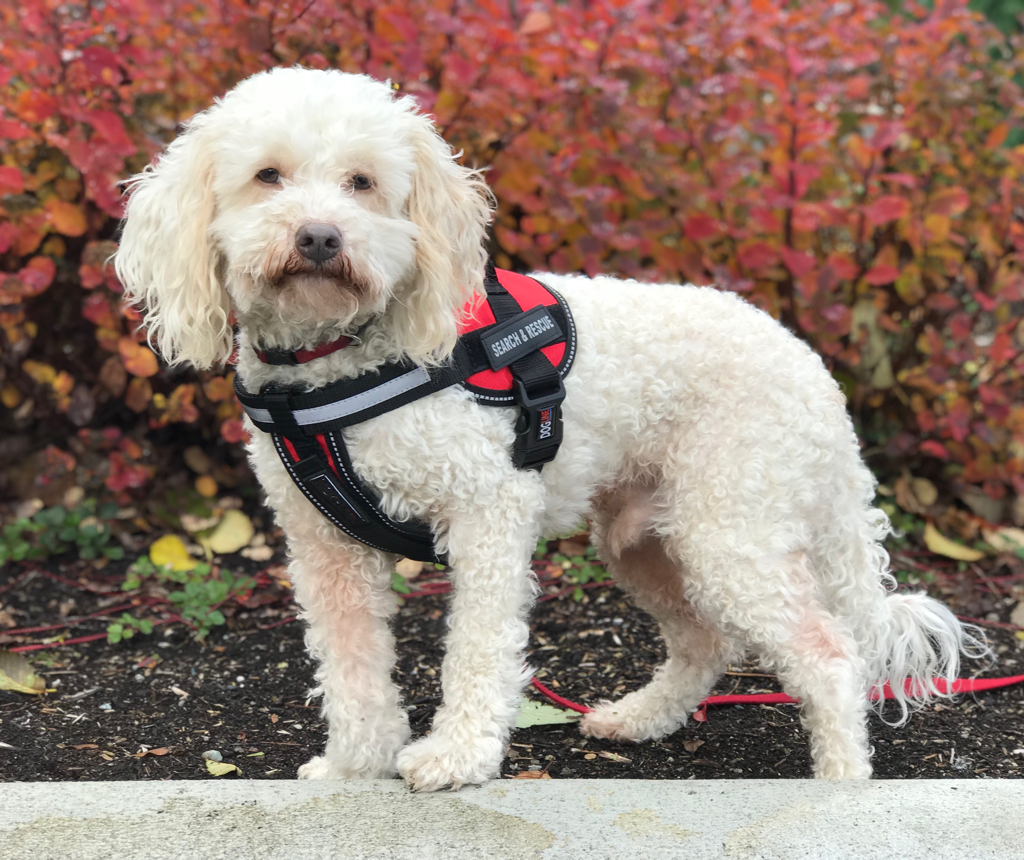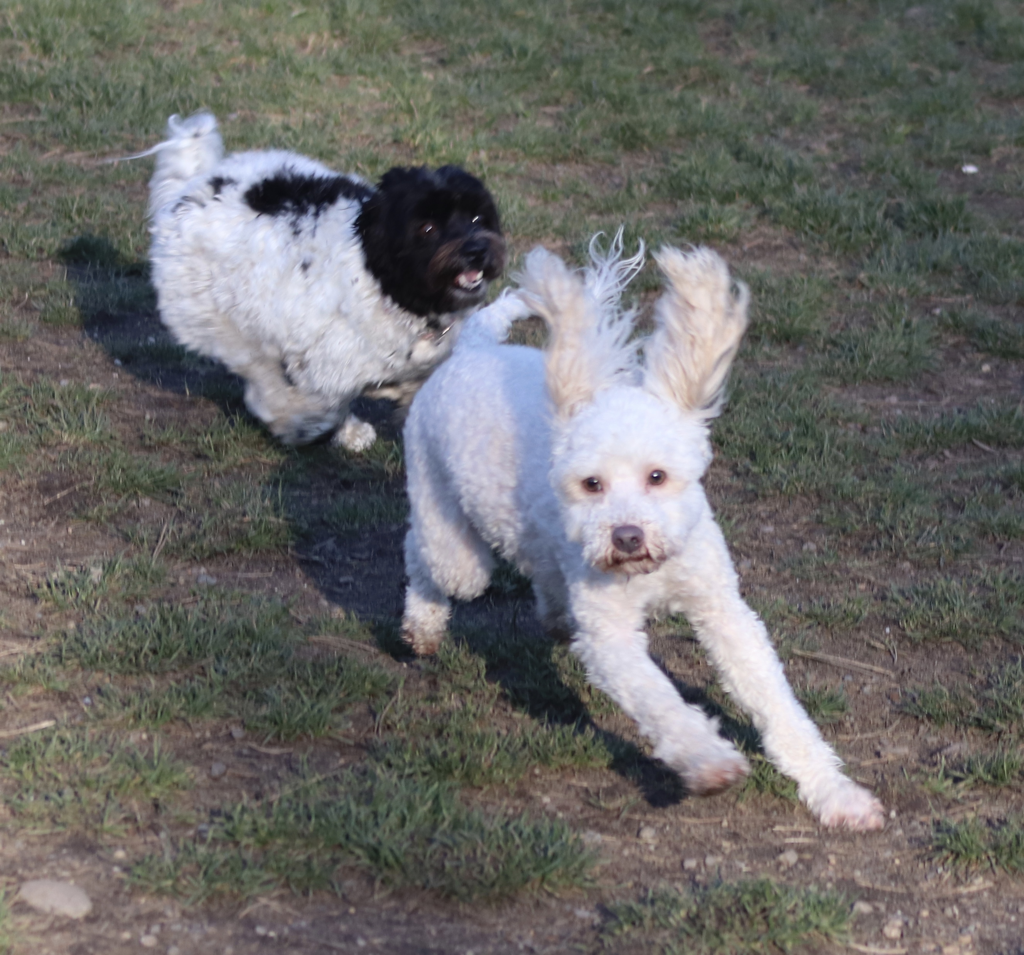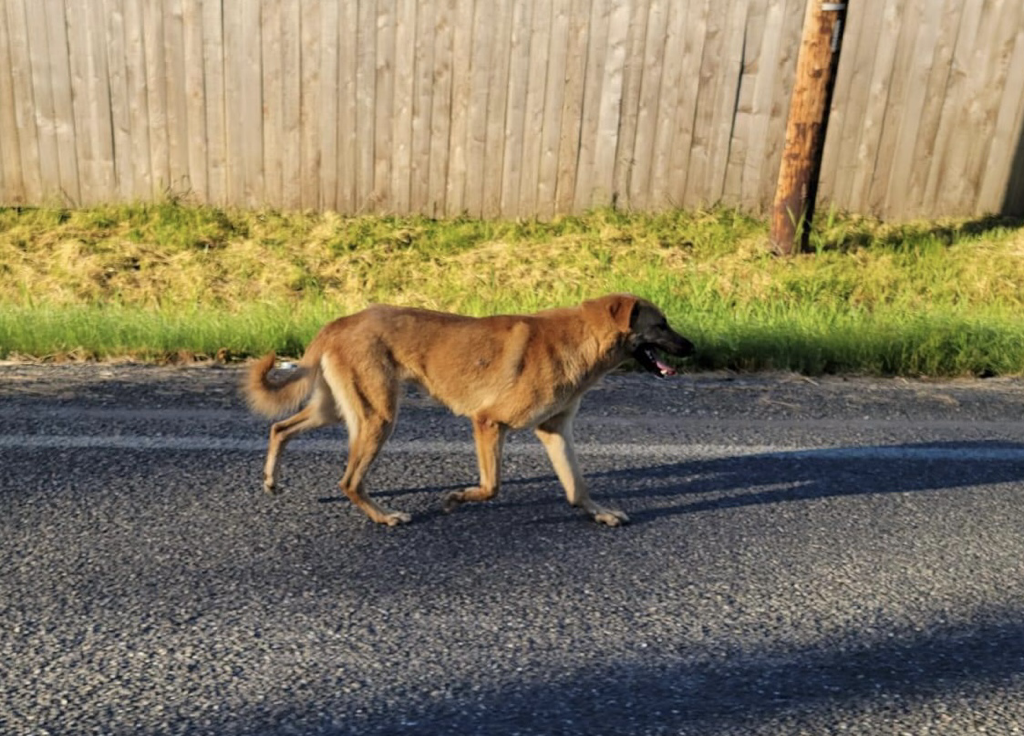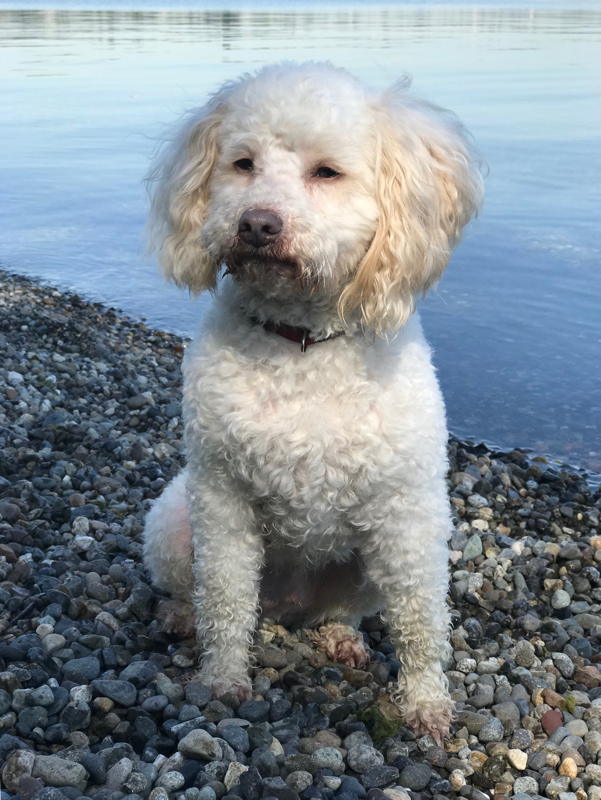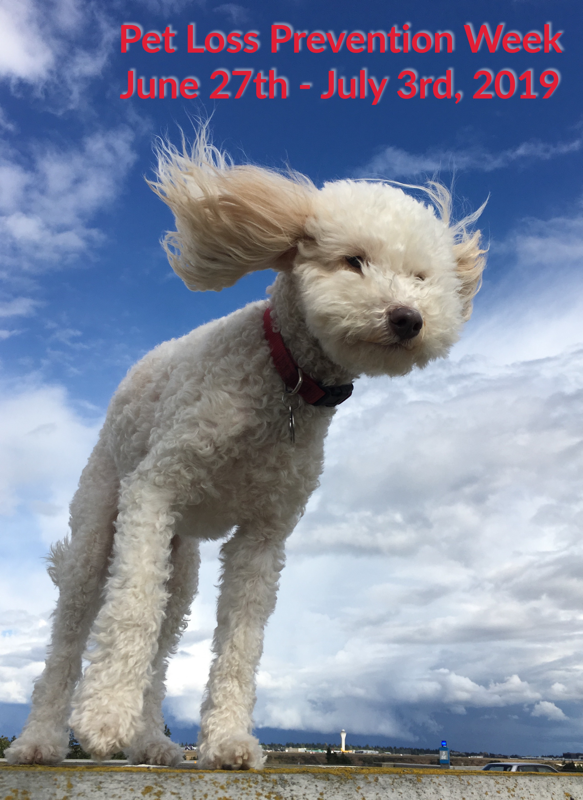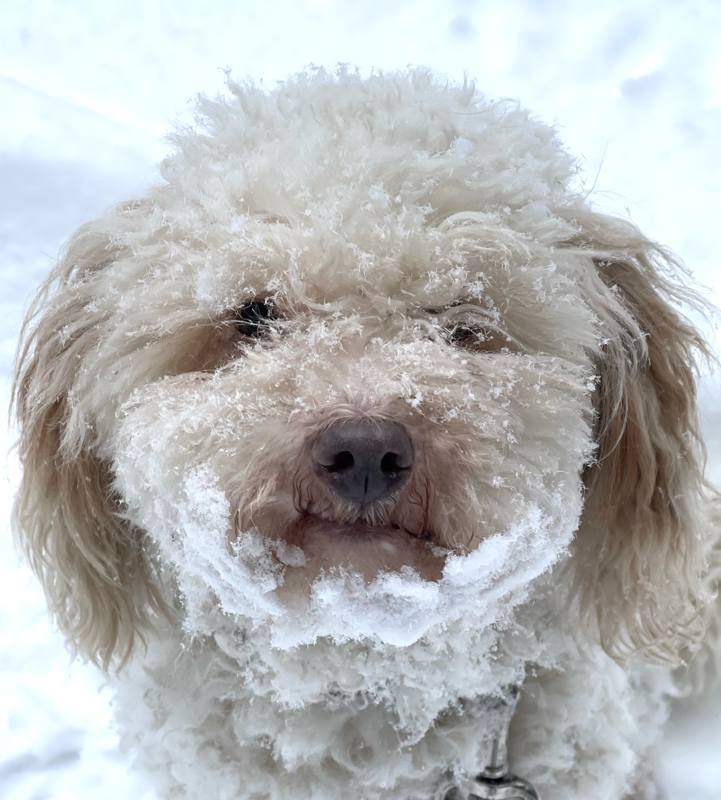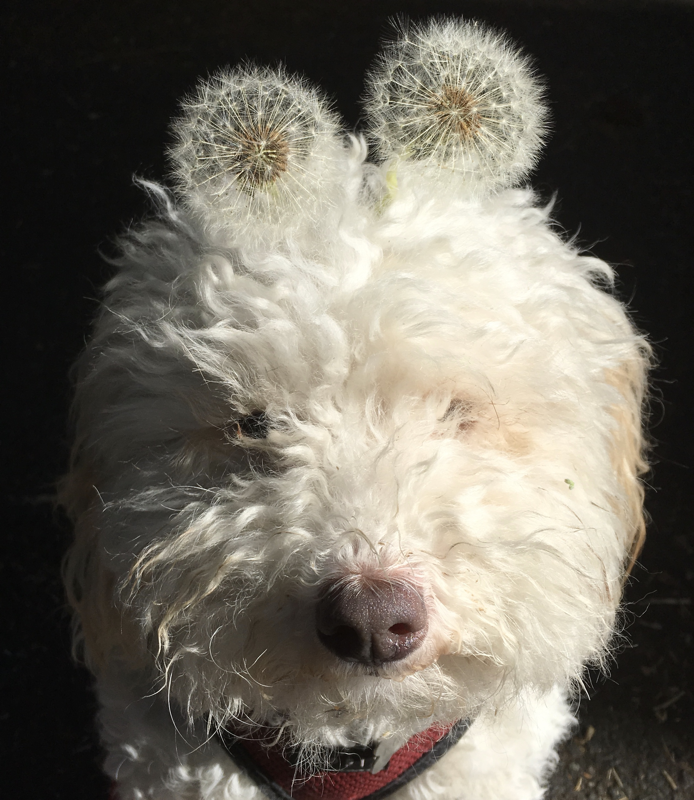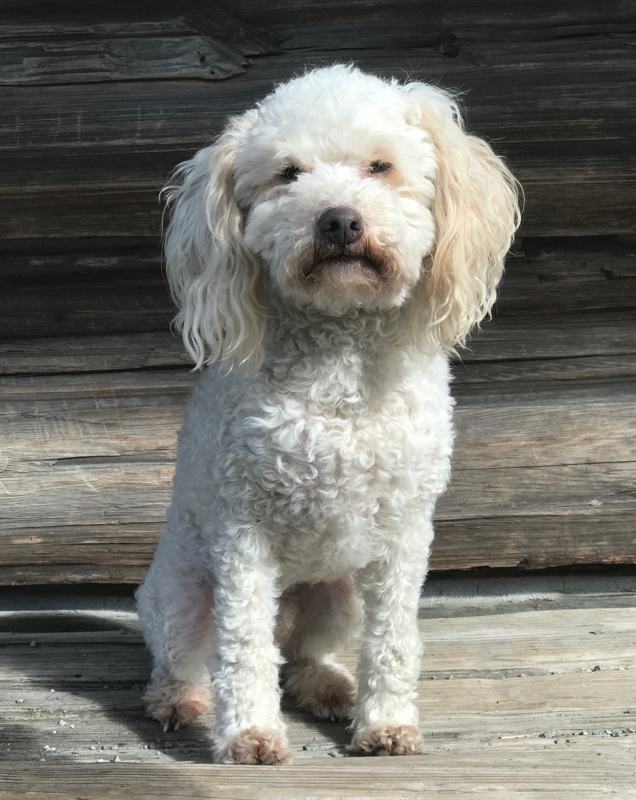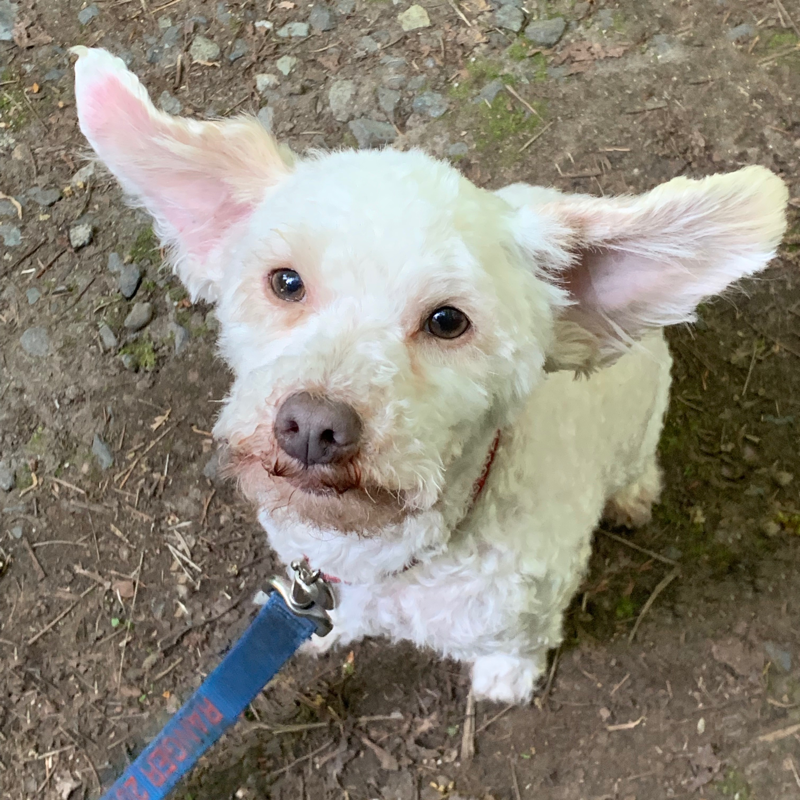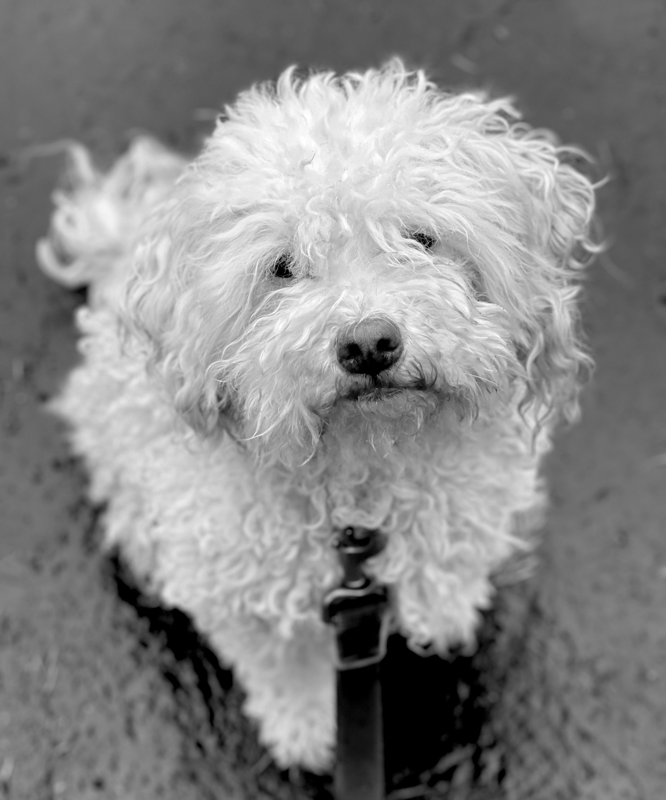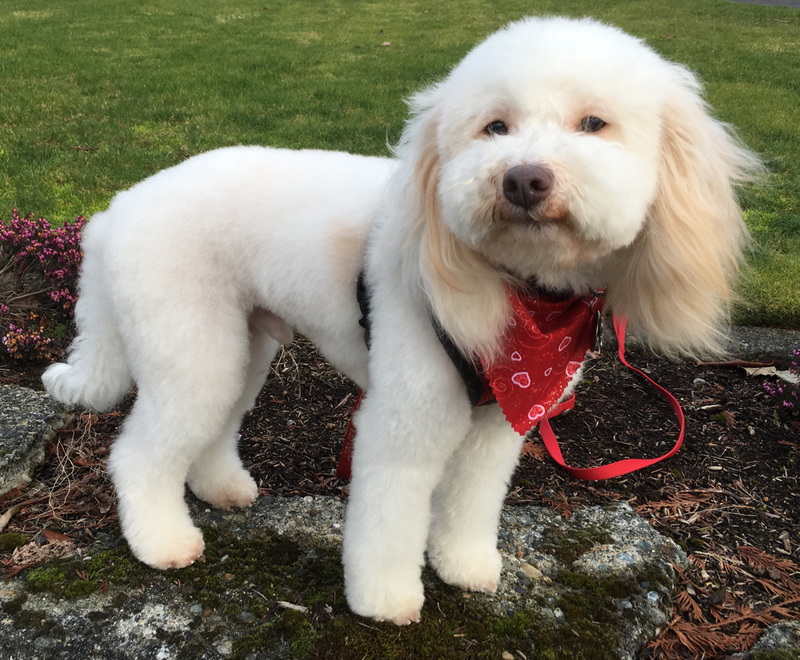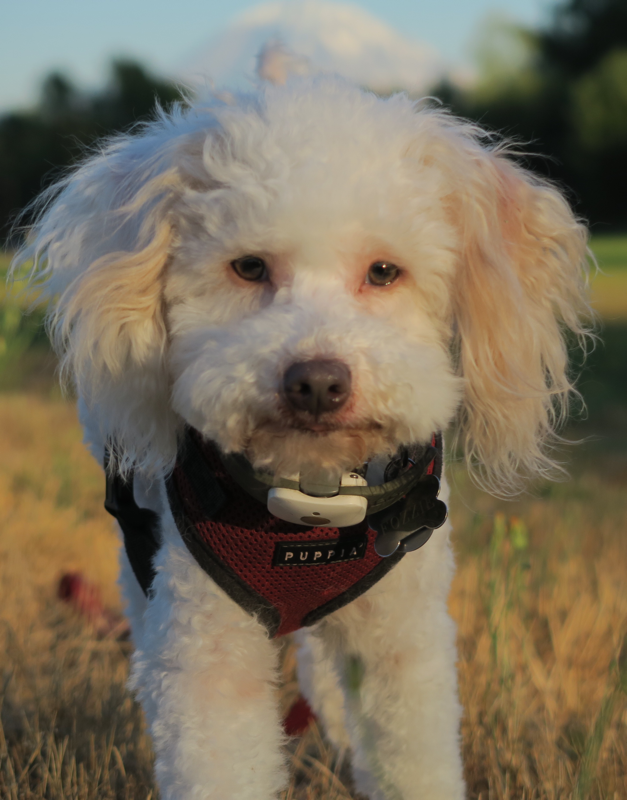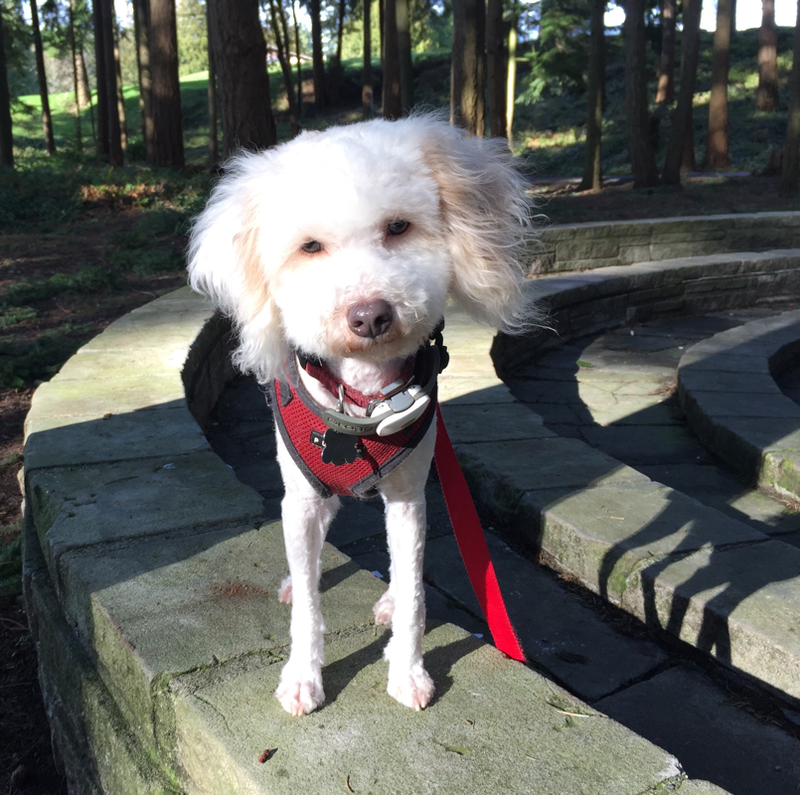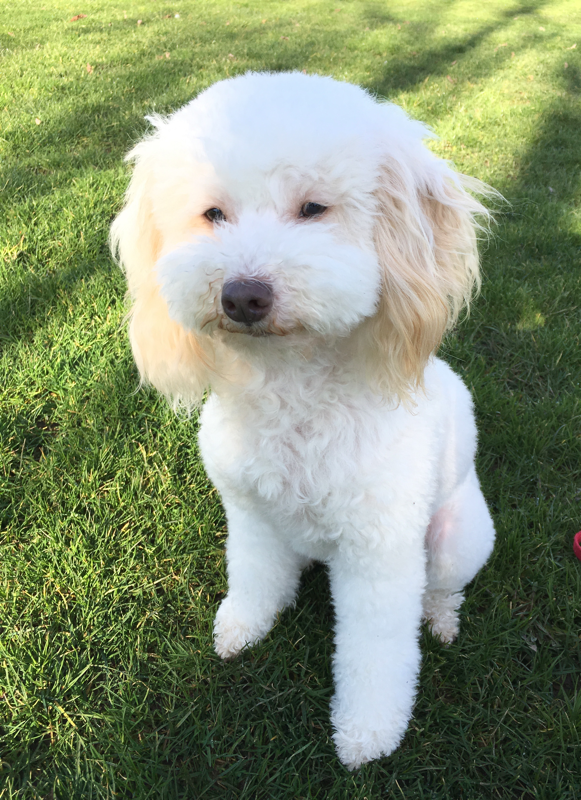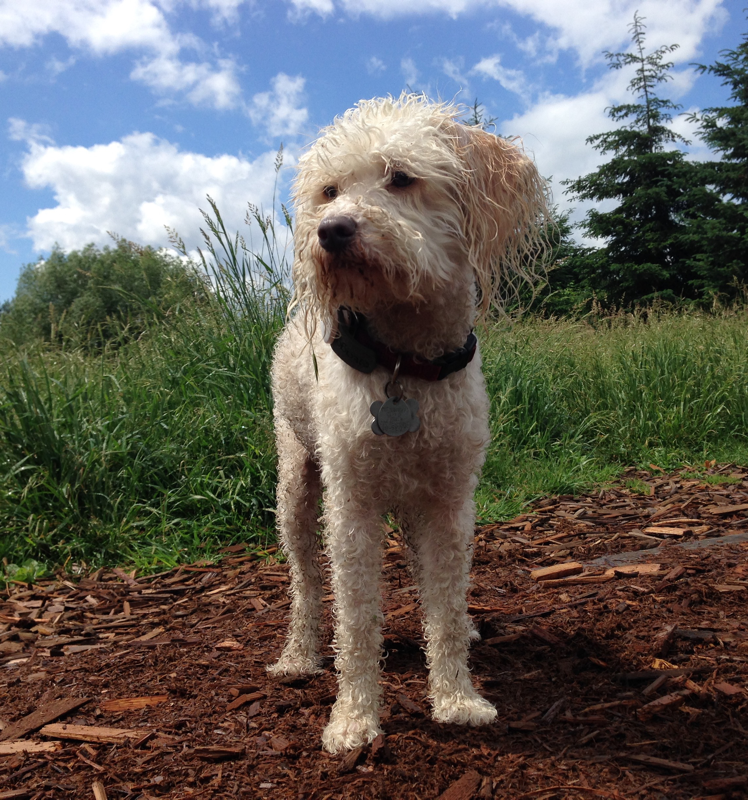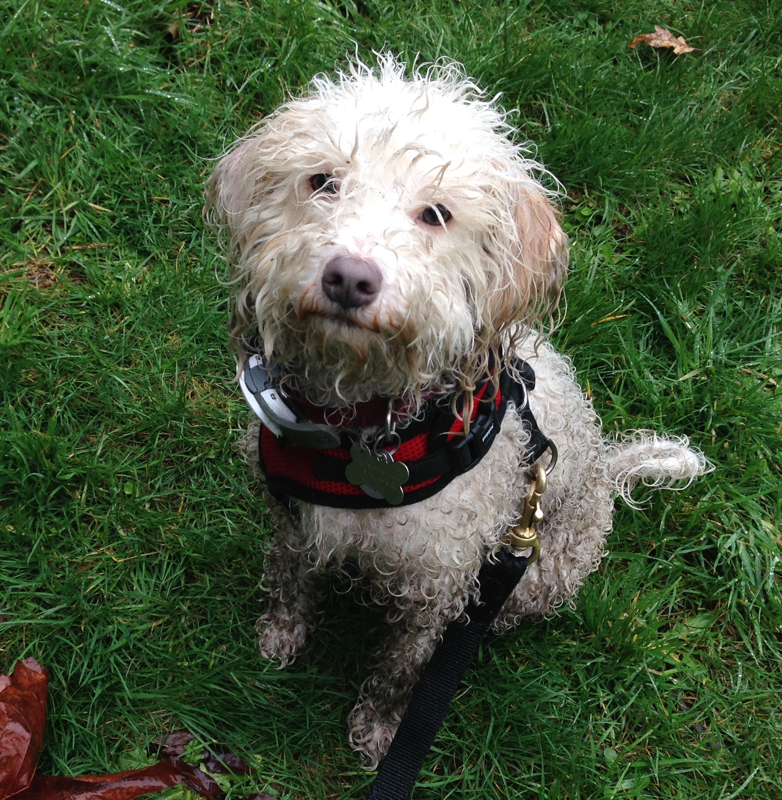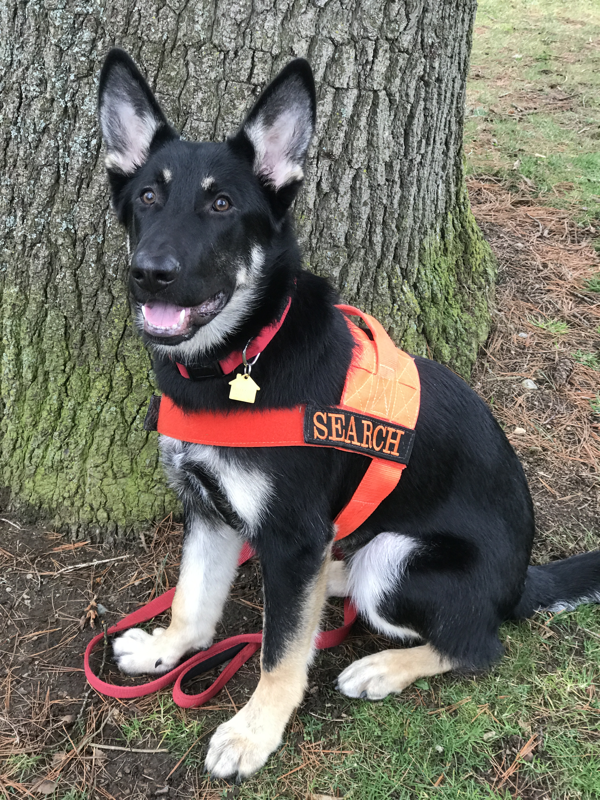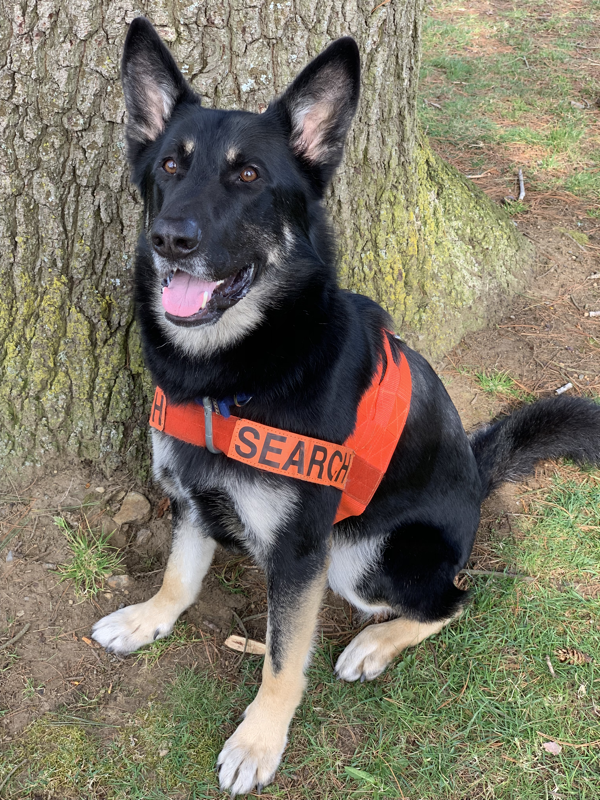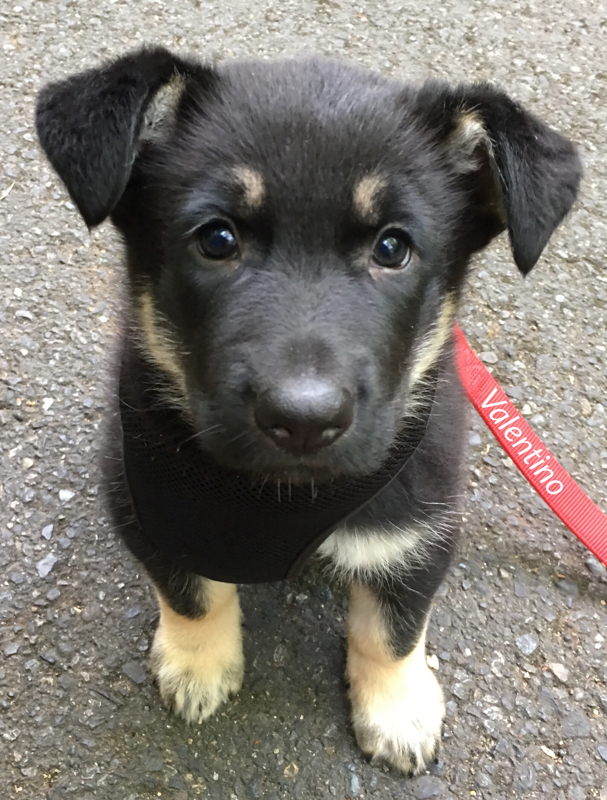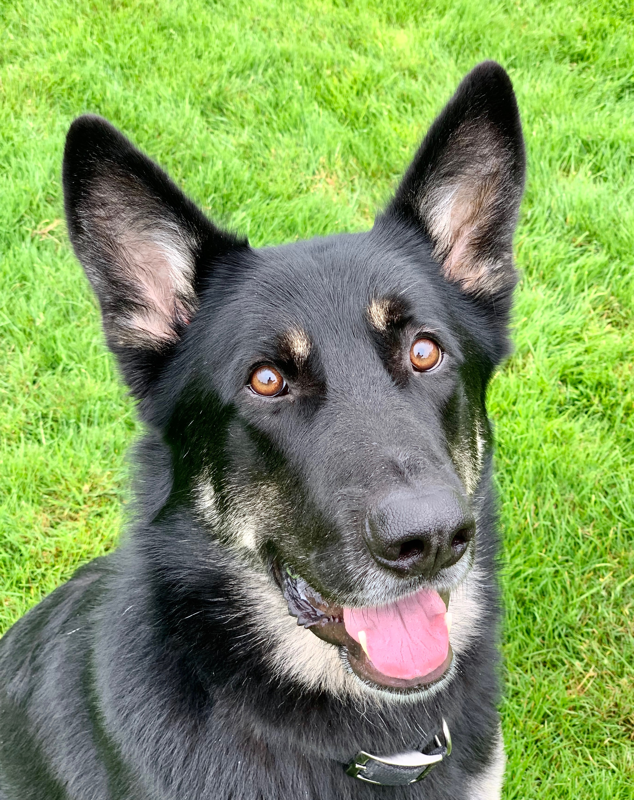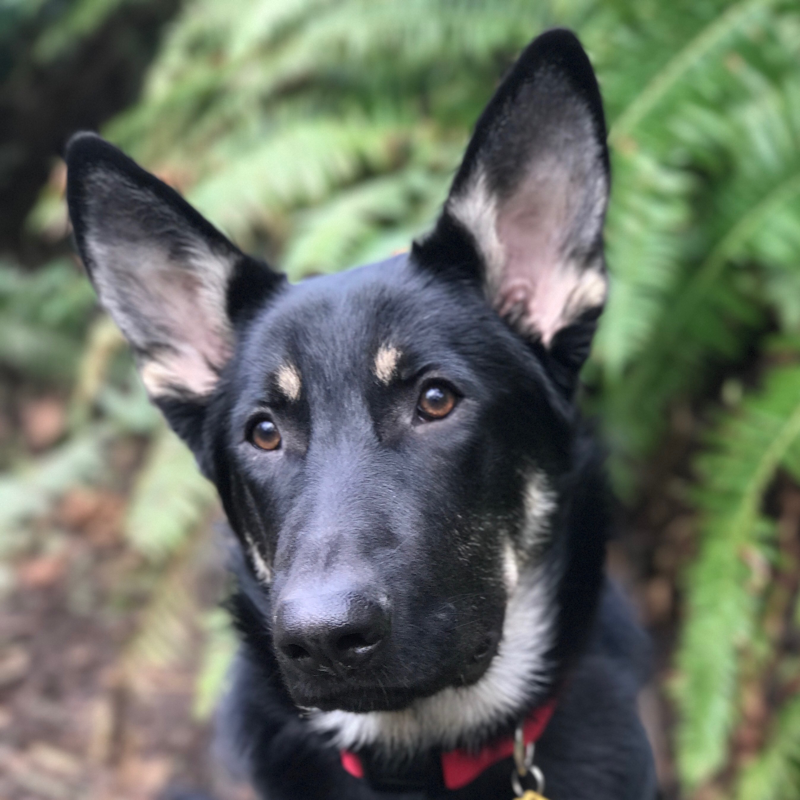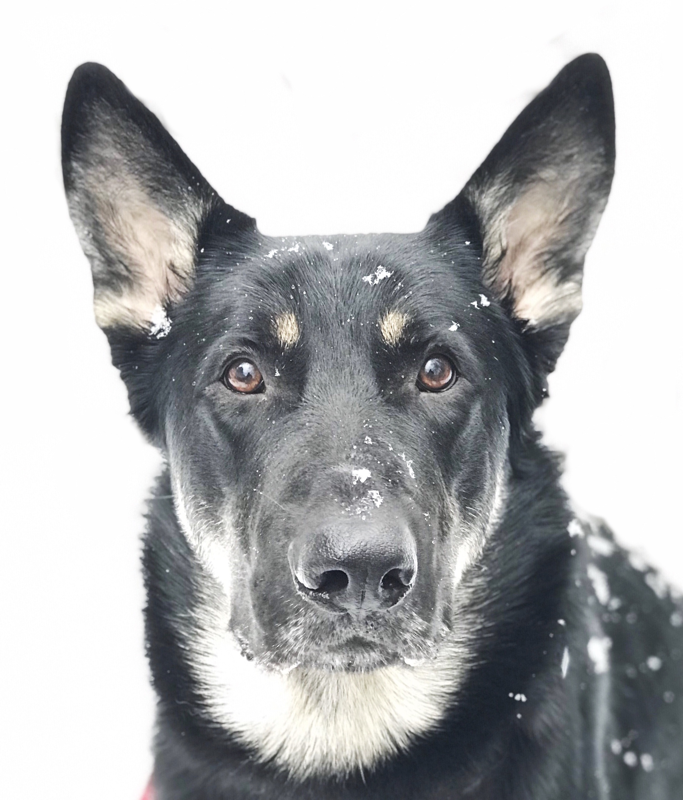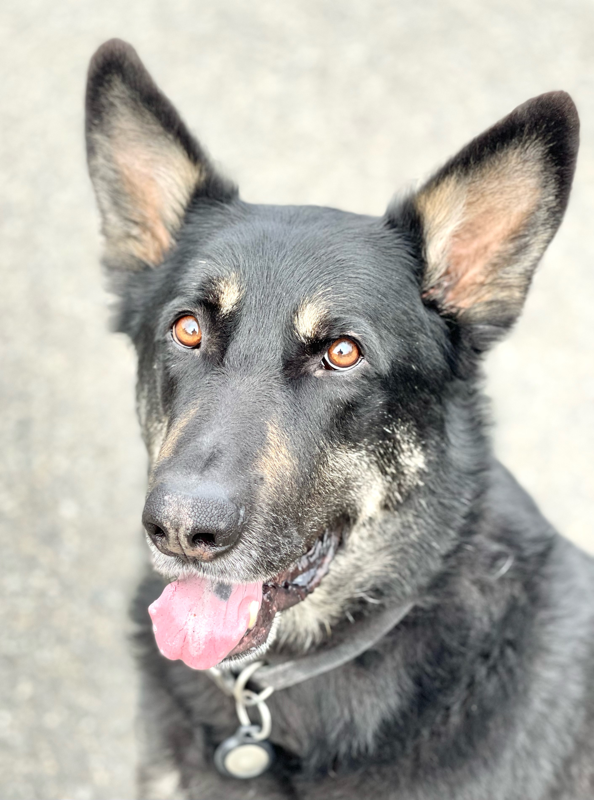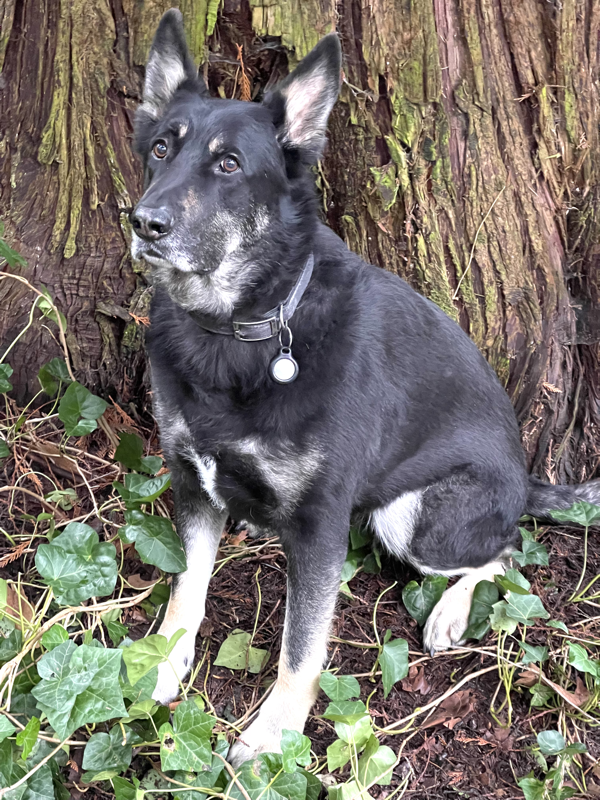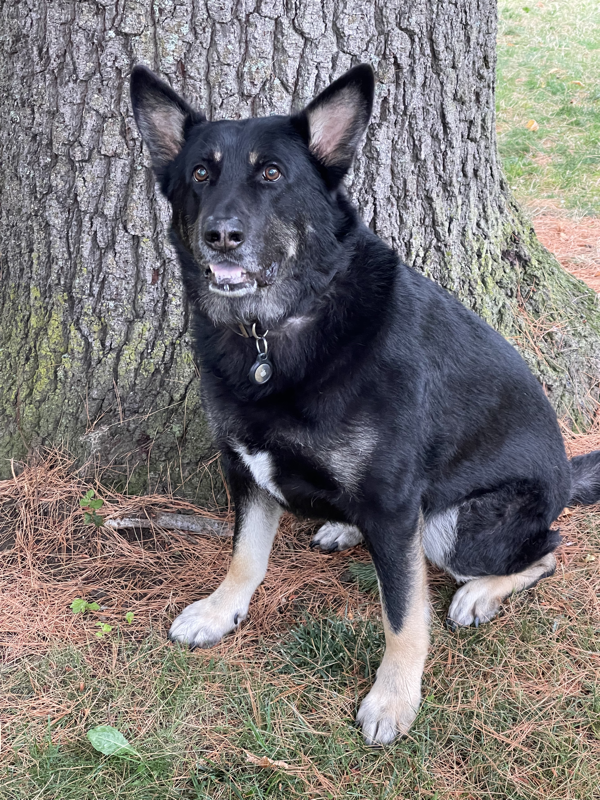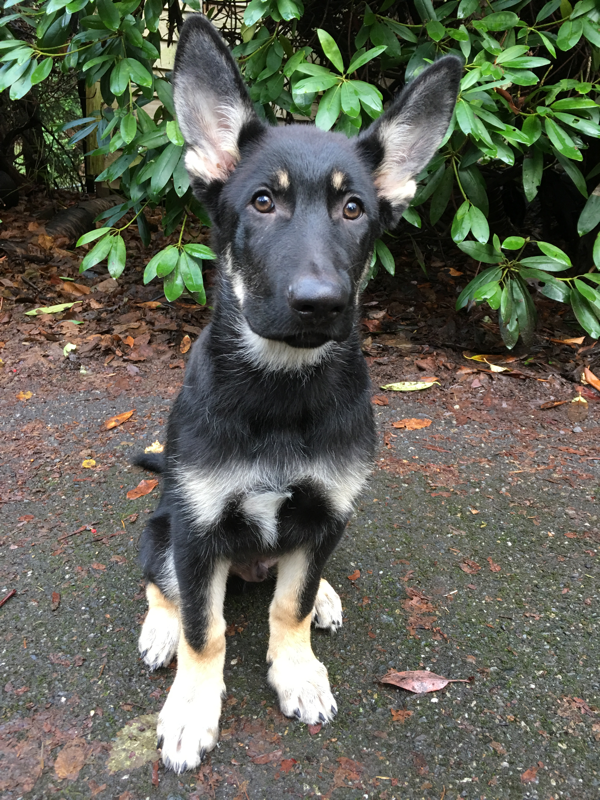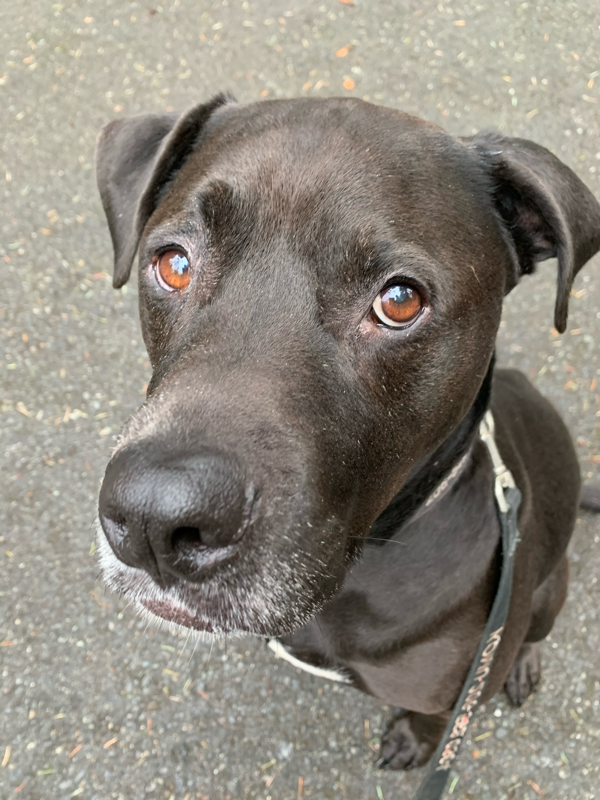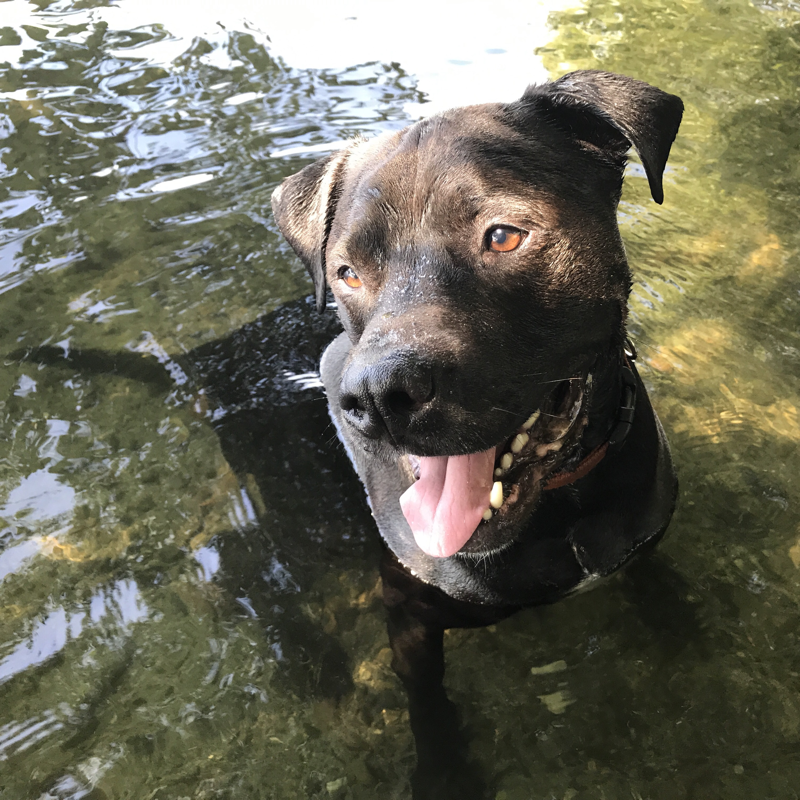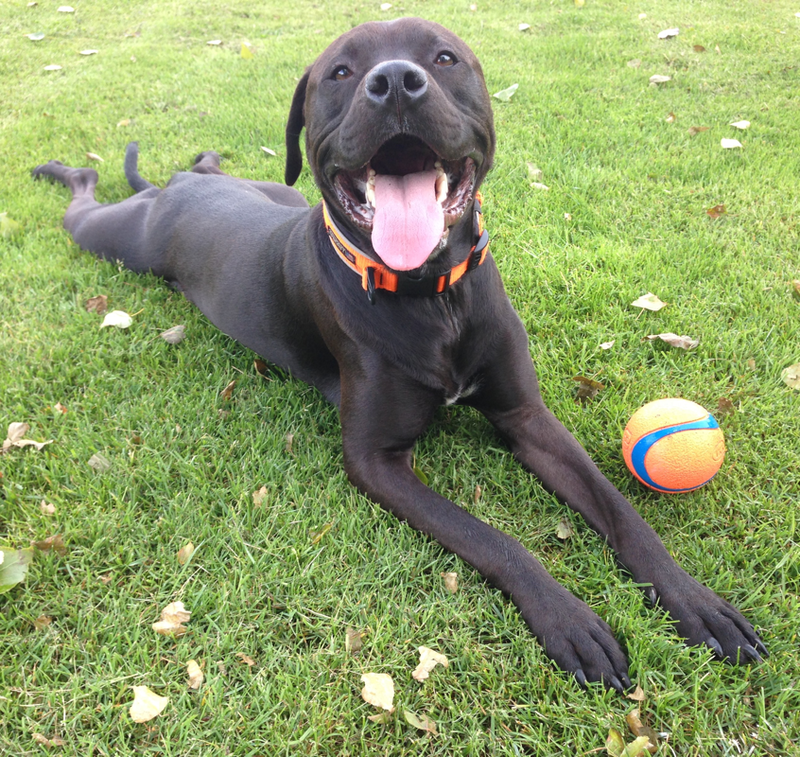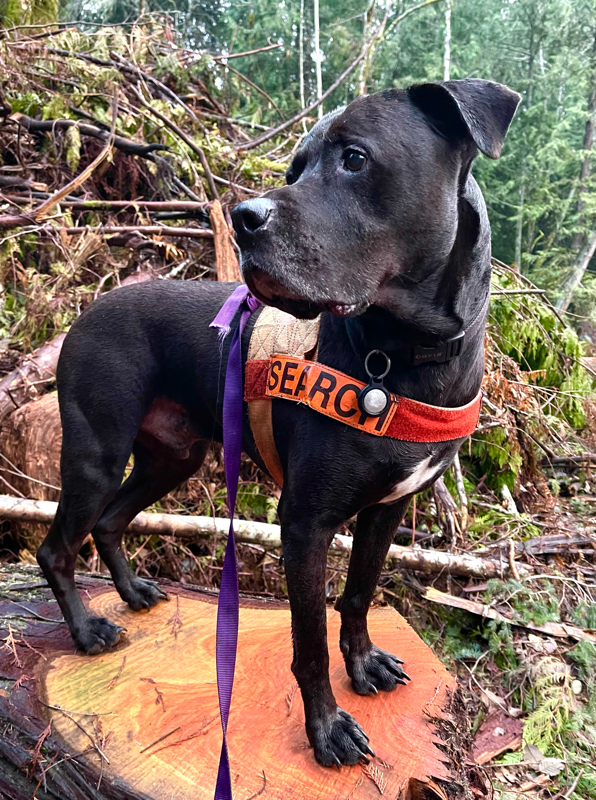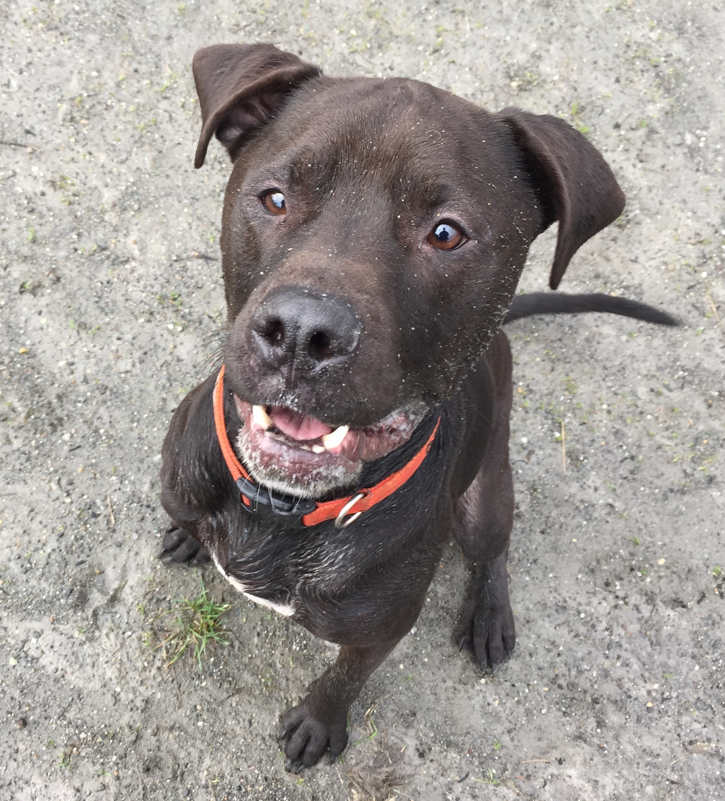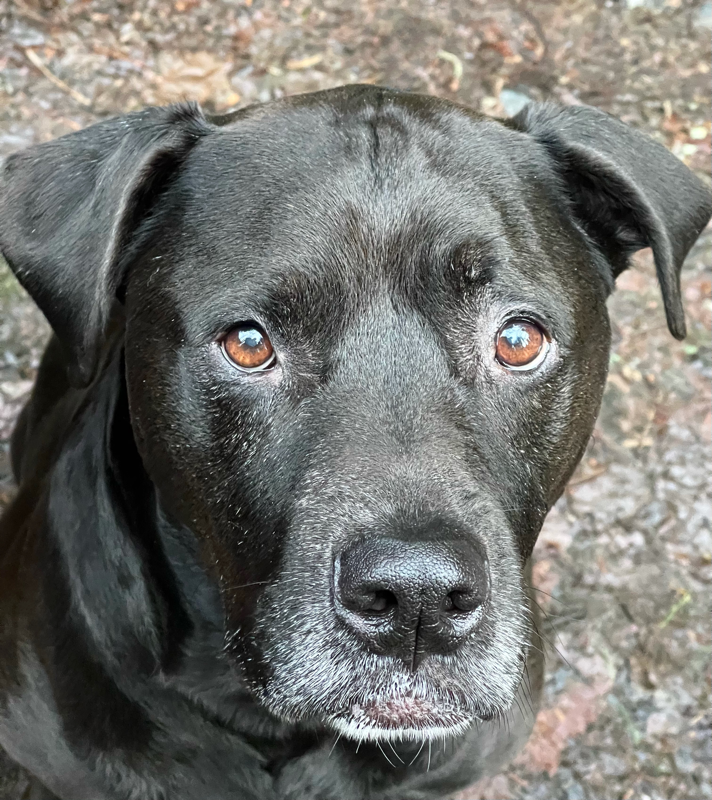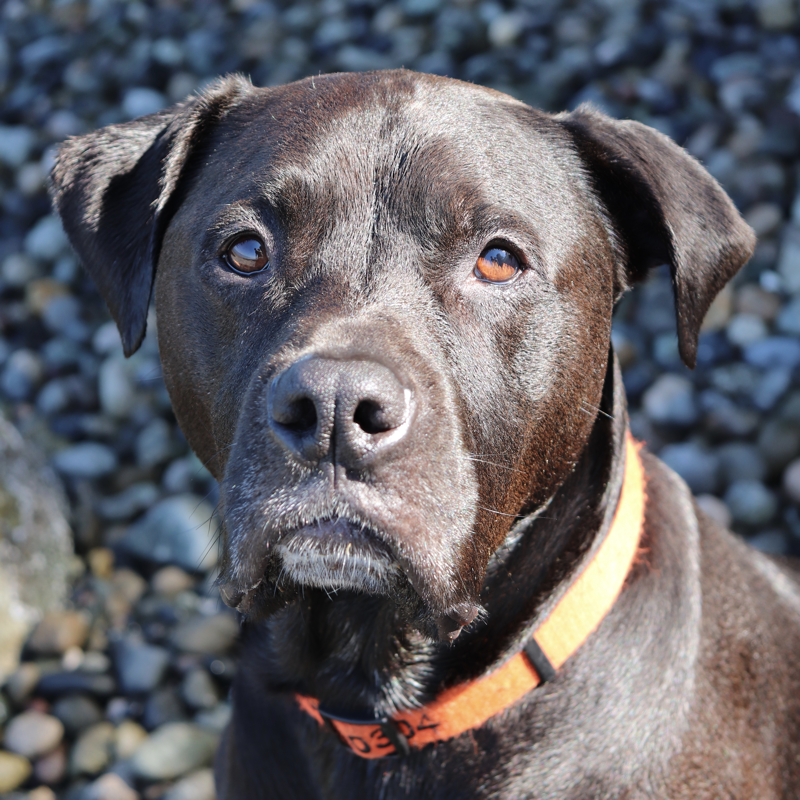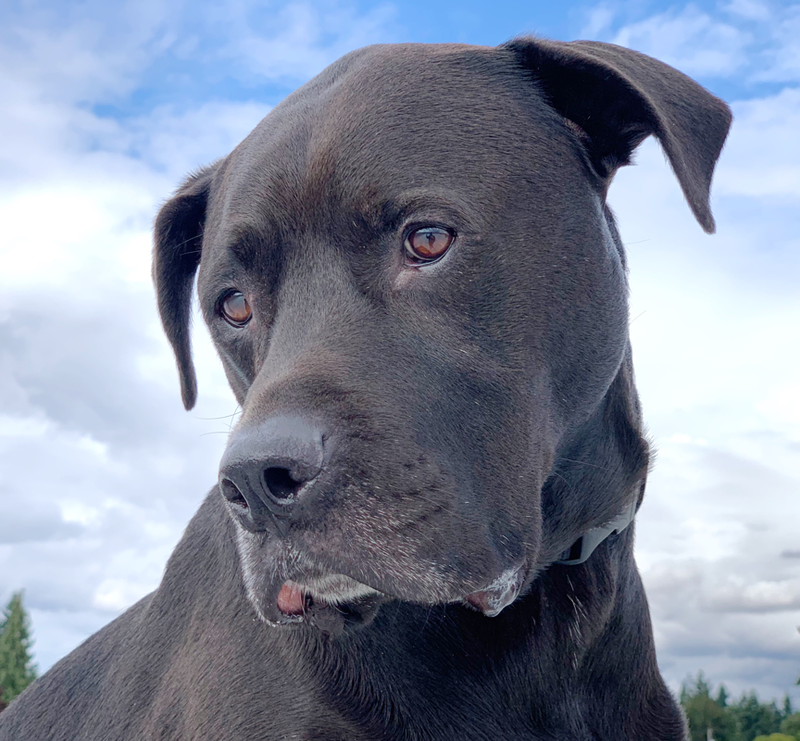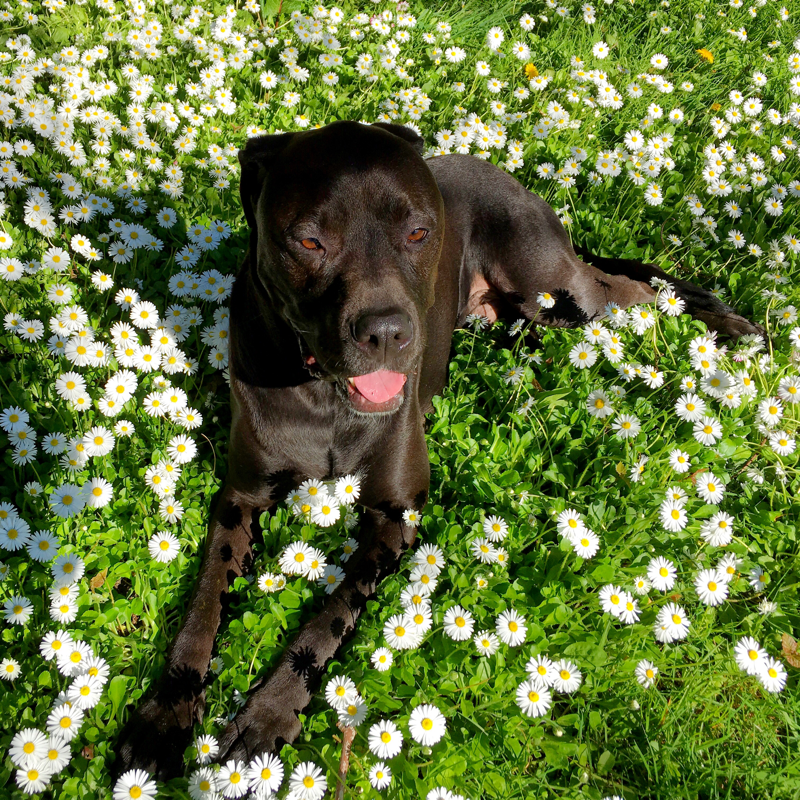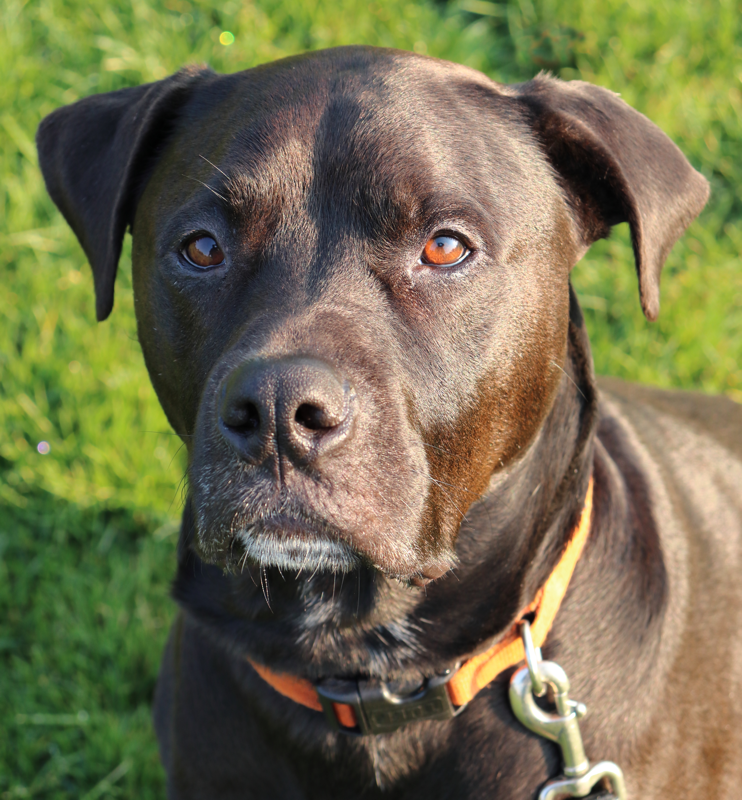Photographic Proof of Ownership
Photographic and visual identification of lost and found dogs and cats.
A woman lost her black lab. She put up fliers and someone reported finding a black lab. It looked and acted like her dog so she took the dog home. After a week of being happy to have her lost dog back, and everything going great, her actual lost dog came home. She didn’t realize the dog she had for a week wasn’t really hers. Who’s dog had she kept accidentally? That’s a true story, but I can no longer find the original source, so I might have some minor details wrong.
At this moment, do you have at least a dozen clear, bright, sharp, simple, detailed pictures of your dog or cat? Have you shared them with family members, in case you lose your phone? Does your dog have a microchip that is up to date with your current information registered with the microchip company? Is your dog wearing an ID tag with your current number? To take care of all of those things might take you 15 to 30 minutes. If you had to take your dog in to get a chip implanted, and if you had to go buy a new ID tag, it might take you a day to get all of those things done. If you have a dog that you love, or even if you have a dog that you don’t especially love, please do these simple tasks as soon as you can. Even if you are ambivalent about the possibility of losing your dog and never getting him back, then do it as a simple courtesy to society. Every single day, dozens of dogs are taken to Seattle area shelters because they don’t have ID tags or microchips. If they had tags and chips, they would have gone straight home. I carry a microchip scanner with me in my car, and I have found many dogs that I was able to scan and return to the owner right away, and avoid a trip to the shelter. If people had clear, detailed pictures of their dogs and cats, it might be a simple, cheap, easy way to establish identity and ownership in situations without tags or chips.
Chips and tags are an absolute must, but it is also important to have good, clear pictures of your dog. For one thing, a really nice picture tells the world that this dog is important to you. If your dog goes missing, and you post a picture online, or make a flier, and your dog looks like a black smudge or a blurry mess, not only does it make your dog harder to identify, but it also sends a message, accurate or not, that your dog was not a priority in your life. I once searched for a lost dog, I can’t even remember what the tiny dog looked like, but the fliers they made for their dog were of the nervous little dog being held by The Grinch. It seemed to be a copy of a copy. You could barely see the dog at all, but it was obviously The Grinch. It was a really creepy poster. I don’t know what other people thought about it, but it made me sad that this was the best picture they could find of their little lost dog. As far as I know, that dog never made it back to that owner.
Another reason to have simple, sharp pictures of your dog, stored in multiple backup locations, is that it could be critical in properly identifying your lost dog from an online posting. When I have found lost dogs that don’t have microchips, if the person claiming to be the owner doesn’t have a photo of their dog, or doesn’t have a clear photo, I can’t just turn over the dog to them. It might not be their dog. I know of dozens of instances, involving dogs I found or dogs that were posted as found on Facebook, where the owner was absolutely positive a found dog was their dog, but if you compared the pictures of the lost and found dogs, an objective eye could see they were different dogs. People who are missing their dogs can be highly emotional, sleep deprived, and not eating properly. They can be overwhelmed by grief. It seems fairly common for the owners of a lost dog to see a picture of a found dog that looks similar, and they become convinced it is their dog. It’s like their minds project the image of their dog onto the picture of the found dog. An objective observer comparing details can see that they are not the same dog. It’s always best to confirm it with a chip scan if possible.
Currently, my own nonprofit, Useless Bay Sanctuary, and another nonprofit are being attacked on social media because people think found dogs are theirs but there are no microchips and a positive match can’t be made from the photographs available. If a city or county shelter had a dog, and you came in and said it was yours, but you didn’t have 100% proof, that shelter has the legal authority to give the dog to you, even if there is a chance it could be a mistake. They can’t be held liable if they make an error. After the 72 hour stray hold is up, the dog is the property of the shelter, and they can give the dog to anyone they deem fit. If our nonprofit rescue has a dog that was found, which we reported as found to the shelter as required, we are required to make an extensive effort to find the dog’s owners, for 30 days or more. The dog does not belong to us. We are just taking care of the dog. If someone tries to claim the dog but they don’t have proof that would hold up in court, we could be in serious trouble for giving a dog to the wrong person. We have to do our due diligence to try to get a dog back to the rightful owner if possible. A clear picture can go a long way toward providing positive proof. People can get very upset when they think a dog is theirs but they can’t get the dog without proof. In most of these situations, it has eventually turned out that the found dog was not their dog. An owner’s desire to get her dog back can blind her to reality. Having clear pictures is best for your dog, best for you and your family, and best for the dog loving community.
If you find a stray dog, whether you have the dog in your control already or whether the dog is taking some time to come to you, get the best possible picture you can. Take several pictures, and also take a video. (Is there anyone in the world today who doesn’t have a high-quality camera/phone in their pocket right now? If you are the last person in the world to get one, go ahead and upgrade now. Even a phone that is two or three years old will have the capacity to capture high resolution pictures and video. You can probably get one for free from your cellular company.) You might not catch the stray dog. Or if you catch the dog, it could escape from you. Having sharp pictures and an accurate location description could go a long way toward helping that lost dog get home safely.
A couple of distinctions about how photos can be helpful and when they might be less helpful: My dog Fozzie looks like a lot of other dogs, and also he hardly ever looks like himself. That is, his appearance changes depending on when he had his last haircut, if he’s been out in the rain, or if he has been in the woods. Also, how his hair is cut can make a huge difference. Someone could find my Fozzie and keep him, and give him a different haircut, and I might look at a sharp, detailed picture of him and have trouble recognizing him. Mu, my cat-detection dog of the past 9 years, is now 11. He looks almost exactly the same as he did when he was one year old, except he has the slightest touch of gray. People have said Mu looks very different in pictures, depending on the lighting and how the picture was taken. Tino is five and a half years old. His markings are changing color, and he is developing new color markings where none existed before. Also, he started getting a touch of gray when he was about a year old. If you compare his pictures over time, besides growing from 2 pounds to 120 pounds, you can see a lot of changes, even though he does look the same essentially. If your dog’s appearance could change over time, it is important to take a lot of pictures and keep them up to date.
I have 116,832 pictures on my iPhone right now, mostly of dogs. By the time you read this, undoubtedly that number will be higher. It costs me not very much at all to store 116,832 pictures in the cloud. 50 GB is $.99 and 2 TB is $9.99. I go with 2 TB, which, I have only reached about half a terabyte so far. 50 gigabites is a lot of dog pictures. Memory is cheap and getting cheaper. As phones progress and try to offer features to outdo each other, in a few years I will probably be able to store all the data in the world on my phone, practically. You can never have too many pictures of dogs and cats. If you look at them closely, they are amazingly beautiful creatures. Each cat or dog is a work of art. Old dogs, dogs with one eye, dogs with three legs, they are all beautiful in their own ways. To live with a dog or a cat is an honor and a privilege, and having the best possible pictures to commemorate them is just the minimum of what these fantastic beasts deserve. On my phone, I have a folder that I have labeled Best, and I put copies of the best pictures of my dogs there. It makes it easier to find them in the sea of 116,832 pictures. Also, it challenges me to always be trying to take a picture of one of my dogs that would qualify to be placed in my Best folder. That folder has 900 pictures right now.
Obviously, I love photography. I take pictures of rocks and clouds and trees. Mostly I take pictures of dogs. It is a way of seeing the world. Even if you don’t love to participate in photography as a hobby or an avocation, please take at least a dozen pictures of your dog or cat. Take some funny ones and some cute ones. Pictures that tell a story are nice. But be sure to take some very simple, well-lit, direct, sharp pictures, against a simple, uncluttered background. Share your best pictures with your family or friends, or share them online. Take some pictures for the love of your dog, but also for safety and insurance. Pictures, ID tags, and microchips can protect your dog or cat if he or she should go missing. You could protect your dog very well, with an up-to-date microchip, a great, sturdy collar with a substantial ID tag, and dozens of sharp pictures, for an investment of not very much time and certainly less than $100. Any and every dog or cat is worth that.
Yesterday, I spent 17 hours helping lost dogs and found dogs. For some of these dogs, I made only incremental progress. For others I didn’t make any progress at all. For one dog that I helped to get home, it really wasn’t a victory because it was a horrible, disgusting, unsafe home, and most likely the dog will escape again. That dog has a high probability of being hit and killed by a car before she’s five years old. I work hard every day to protect dogs and cats, one by one, trying to save them from dangerous conditions. If I could get even a small percentage of pet owners to take my advice on loss prevention, by somehow saying just the right thing in just the right way, I could save so many more dogs than I could with all that grinding daily work of retrieving lost pets. If you won’t take a dozen sharp pictures of your dog or cat just because they are beautiful, if you won’t do it for their safety in case they should become lost, then please do it for me, to make my job a little easier. It would only take you a minute to snap a dozen high-quality, bright, sharp, simple pictures of your dog or cat. I think you will find, one way or another, that you will be glad to have some really good pictures of your pet, even if they never go missing. You might discover the magnificent creature that is living with you every day.
A woman lost her black lab. She put up fliers and someone reported finding a black lab. It looked and acted like her dog so she took the dog home. After a week of being happy to have her lost dog back, and everything going great, her actual lost dog came home. She didn’t realize the dog she had for a week wasn’t really hers. Who’s dog had she kept accidentally? That’s a true story, but I can no longer find the original source, so I might have some minor details wrong.
At this moment, do you have at least a dozen clear, bright, sharp, simple, detailed pictures of your dog or cat? Have you shared them with family members, in case you lose your phone? Does your dog have a microchip that is up to date with your current information registered with the microchip company? Is your dog wearing an ID tag with your current number? To take care of all of those things might take you 15 to 30 minutes. If you had to take your dog in to get a chip implanted, and if you had to go buy a new ID tag, it might take you a day to get all of those things done. If you have a dog that you love, or even if you have a dog that you don’t especially love, please do these simple tasks as soon as you can. Even if you are ambivalent about the possibility of losing your dog and never getting him back, then do it as a simple courtesy to society. Every single day, dozens of dogs are taken to Seattle area shelters because they don’t have ID tags or microchips. If they had tags and chips, they would have gone straight home. I carry a microchip scanner with me in my car, and I have found many dogs that I was able to scan and return to the owner right away, and avoid a trip to the shelter. If people had clear, detailed pictures of their dogs and cats, it might be a simple, cheap, easy way to establish identity and ownership in situations without tags or chips.
Chips and tags are an absolute must, but it is also important to have good, clear pictures of your dog. For one thing, a really nice picture tells the world that this dog is important to you. If your dog goes missing, and you post a picture online, or make a flier, and your dog looks like a black smudge or a blurry mess, not only does it make your dog harder to identify, but it also sends a message, accurate or not, that your dog was not a priority in your life. I once searched for a lost dog, I can’t even remember what the tiny dog looked like, but the fliers they made for their dog were of the nervous little dog being held by The Grinch. It seemed to be a copy of a copy. You could barely see the dog at all, but it was obviously The Grinch. It was a really creepy poster. I don’t know what other people thought about it, but it made me sad that this was the best picture they could find of their little lost dog. As far as I know, that dog never made it back to that owner.
Another reason to have simple, sharp pictures of your dog, stored in multiple backup locations, is that it could be critical in properly identifying your lost dog from an online posting. When I have found lost dogs that don’t have microchips, if the person claiming to be the owner doesn’t have a photo of their dog, or doesn’t have a clear photo, I can’t just turn over the dog to them. It might not be their dog. I know of dozens of instances, involving dogs I found or dogs that were posted as found on Facebook, where the owner was absolutely positive a found dog was their dog, but if you compared the pictures of the lost and found dogs, an objective eye could see they were different dogs. People who are missing their dogs can be highly emotional, sleep deprived, and not eating properly. They can be overwhelmed by grief. It seems fairly common for the owners of a lost dog to see a picture of a found dog that looks similar, and they become convinced it is their dog. It’s like their minds project the image of their dog onto the picture of the found dog. An objective observer comparing details can see that they are not the same dog. It’s always best to confirm it with a chip scan if possible.
Currently, my own nonprofit, Useless Bay Sanctuary, and another nonprofit are being attacked on social media because people think found dogs are theirs but there are no microchips and a positive match can’t be made from the photographs available. If a city or county shelter had a dog, and you came in and said it was yours, but you didn’t have 100% proof, that shelter has the legal authority to give the dog to you, even if there is a chance it could be a mistake. They can’t be held liable if they make an error. After the 72 hour stray hold is up, the dog is the property of the shelter, and they can give the dog to anyone they deem fit. If our nonprofit rescue has a dog that was found, which we reported as found to the shelter as required, we are required to make an extensive effort to find the dog’s owners, for 30 days or more. The dog does not belong to us. We are just taking care of the dog. If someone tries to claim the dog but they don’t have proof that would hold up in court, we could be in serious trouble for giving a dog to the wrong person. We have to do our due diligence to try to get a dog back to the rightful owner if possible. A clear picture can go a long way toward providing positive proof. People can get very upset when they think a dog is theirs but they can’t get the dog without proof. In most of these situations, it has eventually turned out that the found dog was not their dog. An owner’s desire to get her dog back can blind her to reality. Having clear pictures is best for your dog, best for you and your family, and best for the dog loving community.
If you find a stray dog, whether you have the dog in your control already or whether the dog is taking some time to come to you, get the best possible picture you can. Take several pictures, and also take a video. (Is there anyone in the world today who doesn’t have a high-quality camera/phone in their pocket right now? If you are the last person in the world to get one, go ahead and upgrade now. Even a phone that is two or three years old will have the capacity to capture high resolution pictures and video. You can probably get one for free from your cellular company.) You might not catch the stray dog. Or if you catch the dog, it could escape from you. Having sharp pictures and an accurate location description could go a long way toward helping that lost dog get home safely.
A couple of distinctions about how photos can be helpful and when they might be less helpful: My dog Fozzie looks like a lot of other dogs, and also he hardly ever looks like himself. That is, his appearance changes depending on when he had his last haircut, if he’s been out in the rain, or if he has been in the woods. Also, how his hair is cut can make a huge difference. Someone could find my Fozzie and keep him, and give him a different haircut, and I might look at a sharp, detailed picture of him and have trouble recognizing him. Mu, my cat-detection dog of the past 9 years, is now 11. He looks almost exactly the same as he did when he was one year old, except he has the slightest touch of gray. People have said Mu looks very different in pictures, depending on the lighting and how the picture was taken. Tino is five and a half years old. His markings are changing color, and he is developing new color markings where none existed before. Also, he started getting a touch of gray when he was about a year old. If you compare his pictures over time, besides growing from 2 pounds to 120 pounds, you can see a lot of changes, even though he does look the same essentially. If your dog’s appearance could change over time, it is important to take a lot of pictures and keep them up to date.
I have 116,832 pictures on my iPhone right now, mostly of dogs. By the time you read this, undoubtedly that number will be higher. It costs me not very much at all to store 116,832 pictures in the cloud. 50 GB is $.99 and 2 TB is $9.99. I go with 2 TB, which, I have only reached about half a terabyte so far. 50 gigabites is a lot of dog pictures. Memory is cheap and getting cheaper. As phones progress and try to offer features to outdo each other, in a few years I will probably be able to store all the data in the world on my phone, practically. You can never have too many pictures of dogs and cats. If you look at them closely, they are amazingly beautiful creatures. Each cat or dog is a work of art. Old dogs, dogs with one eye, dogs with three legs, they are all beautiful in their own ways. To live with a dog or a cat is an honor and a privilege, and having the best possible pictures to commemorate them is just the minimum of what these fantastic beasts deserve. On my phone, I have a folder that I have labeled Best, and I put copies of the best pictures of my dogs there. It makes it easier to find them in the sea of 116,832 pictures. Also, it challenges me to always be trying to take a picture of one of my dogs that would qualify to be placed in my Best folder. That folder has 900 pictures right now.
Obviously, I love photography. I take pictures of rocks and clouds and trees. Mostly I take pictures of dogs. It is a way of seeing the world. Even if you don’t love to participate in photography as a hobby or an avocation, please take at least a dozen pictures of your dog or cat. Take some funny ones and some cute ones. Pictures that tell a story are nice. But be sure to take some very simple, well-lit, direct, sharp pictures, against a simple, uncluttered background. Share your best pictures with your family or friends, or share them online. Take some pictures for the love of your dog, but also for safety and insurance. Pictures, ID tags, and microchips can protect your dog or cat if he or she should go missing. You could protect your dog very well, with an up-to-date microchip, a great, sturdy collar with a substantial ID tag, and dozens of sharp pictures, for an investment of not very much time and certainly less than $100. Any and every dog or cat is worth that.
Yesterday, I spent 17 hours helping lost dogs and found dogs. For some of these dogs, I made only incremental progress. For others I didn’t make any progress at all. For one dog that I helped to get home, it really wasn’t a victory because it was a horrible, disgusting, unsafe home, and most likely the dog will escape again. That dog has a high probability of being hit and killed by a car before she’s five years old. I work hard every day to protect dogs and cats, one by one, trying to save them from dangerous conditions. If I could get even a small percentage of pet owners to take my advice on loss prevention, by somehow saying just the right thing in just the right way, I could save so many more dogs than I could with all that grinding daily work of retrieving lost pets. If you won’t take a dozen sharp pictures of your dog or cat just because they are beautiful, if you won’t do it for their safety in case they should become lost, then please do it for me, to make my job a little easier. It would only take you a minute to snap a dozen high-quality, bright, sharp, simple pictures of your dog or cat. I think you will find, one way or another, that you will be glad to have some really good pictures of your pet, even if they never go missing. You might discover the magnificent creature that is living with you every day.
